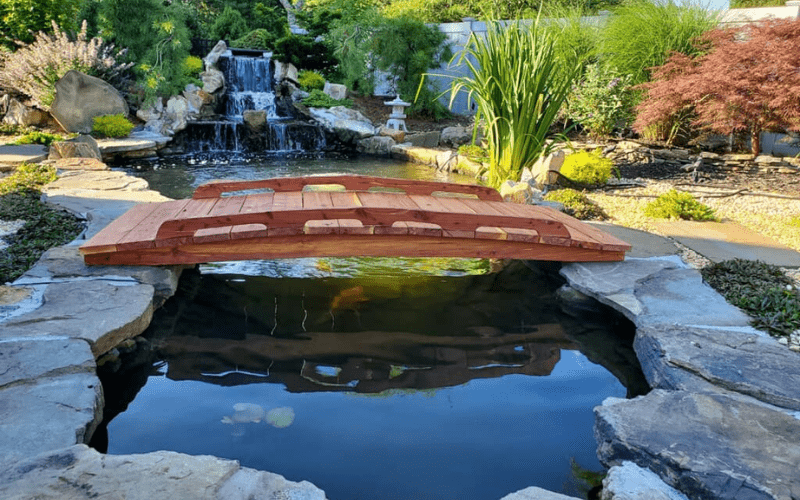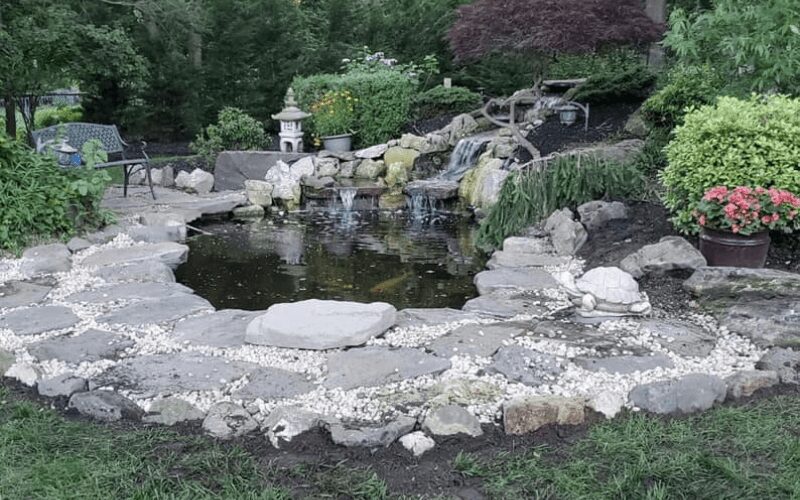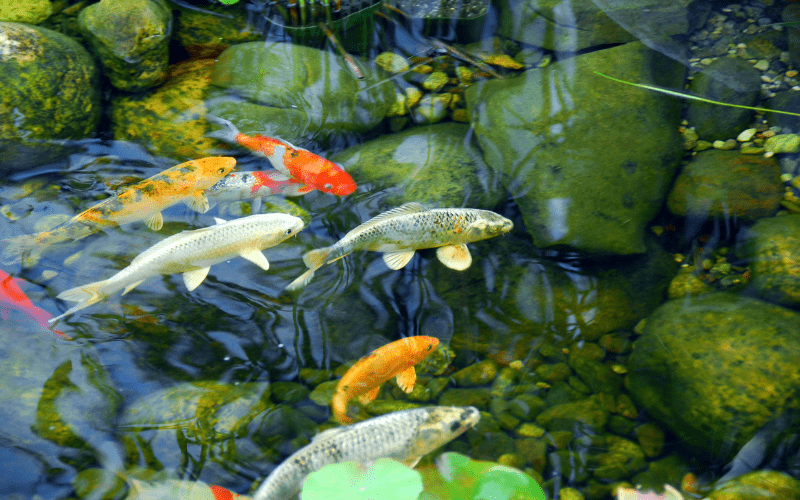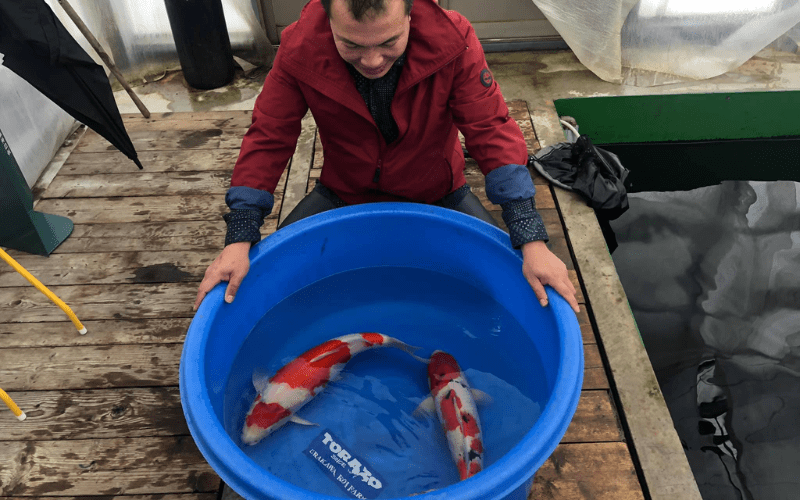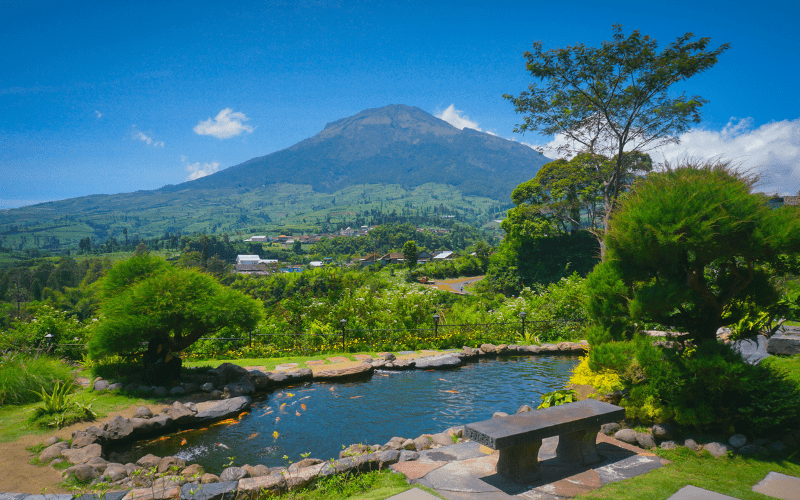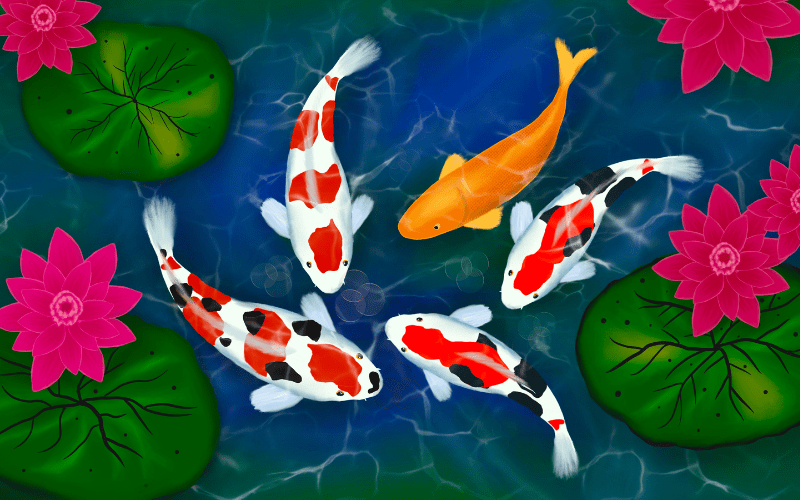A koi pond is a beautiful addition to any outdoor space, offering a tranquil environment while showcasing stunning koi fish. However, proper installation is key to ensuring your pond thrives and your koi remain healthy. If you’re considering adding a koi pond to your garden, there are several essential factors and components to take into account. In this guide, we’ll explore what’s needed for a successful koi pond installation, from planning and materials to ongoing maintenance. Let’s dive into how to make your koi pond a reality with Torii Koi And Pond.
Key Considerations Before Installation
1. Location Selection
Before you begin digging or purchasing materials, it’s essential to select the best location for your koi pond. A well-placed pond can enhance your landscape, while a poorly located one could lead to maintenance headaches. Consider placing your pond where it will get plenty of sunlight but not be in direct sun all day, as this can encourage excessive algae growth. Partial shade from trees can help regulate water temperature, but avoid areas where falling leaves may clog the pond.
Also, think about the view. You’ll want your pond to be visible from a favorite sitting area or a main room in the house. This allows you to enjoy the beauty of your koi and the peaceful ambiance the pond brings to your property.
2. Pond Size and Depth
The size and depth of your pond are crucial for the health and growth of your koi. Koi fish require ample space to swim and grow, so a minimum depth of 3 to 4 feet is recommended. The deeper the pond, the better it is for koi during temperature fluctuations, especially in colder climates where the water can freeze. The pond’s surface area also plays a role in determining how many koi you can safely house. As a general rule, a koi pond should be at least 1,000 gallons, with more volume allowing for larger or more fish.
3. Budget Planning
A well-designed koi pond is a financial investment, so it’s vital to plan your budget accordingly. Costs will include materials for the pond liner, filtration system, pumps, landscaping, and, of course, the koi fish themselves. Maintenance supplies, such as water treatment products and testing kits, should also be factored in.
Materials Required for Koi Pond Installation
1. Liner Material
A durable pond liner is the foundation of any koi pond. There are two popular options: EPDM rubber liners and concrete ponds. EPDM liners are flexible, making them easier to install and more cost-effective. Concrete ponds, while more permanent, can be expensive and labor-intensive. If you’re unsure about which to choose, Torii Koi And Pond can offer professional advice tailored to your specific needs.
2. Underlayment
To protect your pond liner from sharp rocks or roots beneath the pond, an underlayment is necessary. This additional layer acts as a cushion and prolongs the life of the liner.
3. Rocks and Gravel
Rocks and gravel are not just decorative; they help create a natural look while offering hiding spots for your koi. Additionally, gravel provides beneficial bacteria with surfaces to colonize, helping maintain water quality.
Essential Equipment for a Koi Pond
1. Filtration System
A high-quality filtration system is one of the most critical components of your koi pond. Koi produce waste that can quickly lead to poor water conditions if not properly filtered. A good filtration system will include both mechanical and biological filtration. Mechanical filters remove debris, while biological filters use beneficial bacteria to break down harmful toxins.
2. Pump and Water Circulation
Your pond’s pump should be powerful enough to circulate the entire volume of water at least once every hour. Proper circulation ensures even oxygen distribution, vital for koi health. Waterfalls and fountains not only enhance circulation but also add to the pond’s beauty.
3. Aeration System
Even with good circulation, an aeration system can be beneficial. Air pumps or aerators increase the oxygen levels in the water, which is crucial for both the koi and the beneficial bacteria in your filtration system.
4. UV Clarifier
To maintain clear water and control algae growth, a UV clarifier is an excellent addition. This device uses ultraviolet light to kill algae spores, preventing green water without the use of harsh chemicals.
5. Skimmer and Bottom Drain
A pond skimmer helps keep the water surface clear by capturing leaves and debris, while a bottom drain removes waste that settles on the pond’s floor. Both features reduce manual cleaning and help maintain pristine water conditions.
Water Quality and Maintenance
Maintaining good water quality is vital to the health of your koi. You’ll need a water testing kit to regularly check for pH, ammonia, nitrites, and nitrates. These tests ensure that your pond’s water remains balanced and safe for koi. Additionally, water treatment products such as dechlorinators and beneficial bacteria should be on hand to address any imbalances.
To further enhance the look and feel of your pond, consider adding a waterfall or fountain. Not only do these features add to the aesthetic appeal, but they also increase aeration and help keep the water clean.
Plants and Landscaping
Aquatic plants, such as water lilies and lotus, not only beautify the pond but also provide shade for your koi and help improve water quality by absorbing excess nutrients. Be sure to choose plants that are koi-friendly, as koi tend to nibble on certain types of vegetation.
Landscaping around the pond with rocks, plants, and other natural elements enhances the pond’s overall look. Edge landscaping can create a seamless transition between your pond and the surrounding garden.
Safety Features
Pond netting is highly recommended to protect your koi from predators like birds or raccoons. Additionally, if you have children or pets, consider installing a fence around the pond for added safety.
Preparing for Koi
Before introducing koi into their new home, a quarantine tank is essential. This ensures that any new fish do not bring diseases or parasites into the pond. Once your koi are healthy and ready, acclimatization should be done gradually to avoid stressing the fish with sudden changes in water temperature or chemistry.
Ongoing Maintenance
Once your pond is installed, seasonal maintenance will be required to keep it in top condition. In the spring and fall, clean out excess debris and check your filtration system. Feeding your koi should also be adjusted based on the time of year. During warmer months, koi are more active and will require more food. Always use high-quality koi food from trusted sources like Torii Koi And Pond to ensure your fish are receiving proper nutrition.
FAQs
- What is the ideal size for a koi pond?
- A minimum of 1,000 gallons with a depth of 3 to 4 feet is recommended for koi ponds.
- Do I need a UV clarifier for my koi pond?
- Yes, a UV clarifier helps control algae growth and maintain clear water.
- What type of filtration system is best for koi ponds?
- A combination of mechanical and biological filtration ensures clean water and healthy koi.
- How often should I test the water in my koi pond?
- It’s best to test your pond’s water weekly, especially during the warmer months.
- Where can I buy high-quality koi pond equipment?
- You can find top-tier equipment, filtration systems, and koi care products at Torii Koi And Pond.
Conclusion
Installing a koi pond is a rewarding experience that adds beauty and tranquility to your outdoor space. By carefully planning your pond’s location, size, and equipment, you can create an ideal environment for your koi. Torii Koi And Pond is here to help you every step of the way, from selecting the best materials to providing expert advice on pond maintenance and installation.
By following these guidelines, your koi pond will be a stunning addition to your garden that offers years of enjoyment. With the help of Torii Koi And Pond, you can ensure your pond is designed for long-term success.


